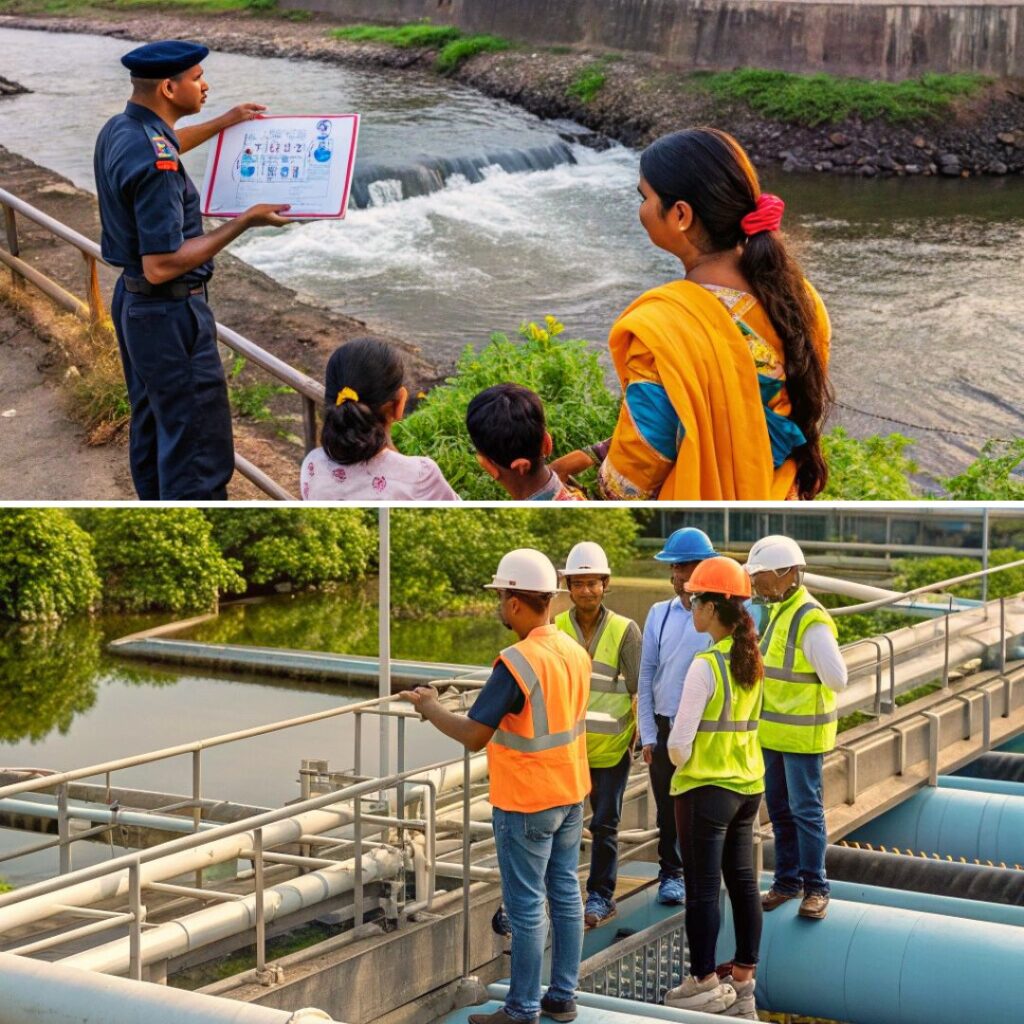It was a warm winter morning. The melodious chirping of peacocks and parakeets echoed in the village. Our journey into the heart of rural India took us to a small village called Ransisar Jodha in Rajasthan. The overwhelming sense of belonging cocoons your soul as the warmth and unconditional love of villagers greet you at every step. There is beauty in the soothing silence here. After a hearty meal, we set forth on a journey towards the endless fields.
Despite the early onset of winter, the scorching heat of Rajasthan enslaves every soul. The fragrance of spicy tea and khejri flowers wafted through the air. Far ahead, we hear the familiar chattering of three Rajasthani women clad in vibrant colours. Their hips swayed to the tunes of the earth while their shoulders bore the burden of poverty. With pots and hay on their heads, they made their way to the fields for yet another day of harsh labour.
Golden shrubs and skeletal structures of trees dotted the fields. The entire landscape was wilting away right before our eyes. After walking for about two kilometres, we stumbled upon a house in the midst of khejri trees. A few men were seen cutting down branches in the distance.
We heard from locals that there was a huge gathering behind us. Apparently, people from the neighbouring village had come to meet a prospective groom’s family.
“Where is the groom?,” we asked them. A frail old man pointed towards a young lad who was gathering branches nearby.
“Woh hai dulha. Abhi charcha chal rahi hai dono parivar main. Dekhte hain kya hoga.” (That’s the groom. Right now, both the families are engaged in conversation. Let’s see what happens.)
As we sat around a tree welcoming the shade, the view burst to life with hordes of Gujjar women settling in to milk goats. Amidst them, a mother adorned in bright orange floral lehenga (skirt) and red ghoonghat (veil) walked towards us. Her skin resembled the sands of the desert; the rubbery texture reminiscent of her fair share in the scorching heat of Rajasthan. Cradled in her arms was two-year-old Krishna.
Her bright hazel eyes shone in the sun. We mentioned to the mother that her daughter was adorable. To which she replied, “Why don’t you take her with you?” Her playful smile could not hide the despair and grief in her eyes.
Despite the reduction in female infanticide over the years, the joy of having a boy knows no bounds in comparison with a girl. However, that doesn’t mean that parents are not attached to their daughters. In conversation, they told that they love them dearly because one day they will leave. They are meant to. The parents have no choice but to come to terms with the grief of abandonment at some point. On one hand, they wish to gift her all the joy in the world, on the other they secretly hoped that she was a boy.
People might have enough money and still look forward to having a son in order to multiply their reserves. However, the tendency of female infanticide in rural Rajastham has seen a sharp decline as the economical situation of a family improved over the years. The real story of the beginning of this belief and practice lies in poverty. After all, these are people who toil hard on a regular basis in the fields and whose livelihood depends directly on the mercy of weather and crops. They are buried in debt. Therefore, raising a girl just translates into more debt. A son, they hope and dream, will at least carry their debt forward and pay it off.
We were also informed that thanks to the earlier practices of female infanticide, its effects are seen even today. There are hardly any women left in the lower communities and yet they mourn the birth of a girl. According to the Rajasthan Development Report (RDP) released by the Planning Commission of India, the 2001 consensus estimates indicate that the state has registered an improvement in child sex ratio in the past three decades. However, the ratio of the age group 0 to 6 has actually seen a sharp decline since 1991. Gross discrimination against the girl child still persists in many parts of the country. However, based on the report sex ratio is inversely related to poverty. The RDP states “Statistics show that the sex ratio is better than below poverty line (BPL) households than in above poverty line (APL) households and the adverse sex ratio of 0 to 6 is higher in relatively more prosperous regions and among better households. Adverse sex ratio is more marked in rural areas than urban areas. The skewed sex ratio in urban areas is mainly due to the sex determination of foetus and female foeticide facilities for which are more readily available in urban areas. Moreover, infant and child mortality rate are much higher in rural areas than in urban areas. The under-five mortality rate is higher for girls than boys, reflecting the gross neglect of a girl child.”
More than 68 percent of women are married before the age of 18. Infant and child mortality rate is still quite high in Rajasthan. Despite being…











